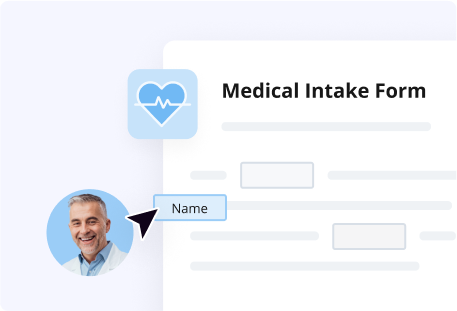Type any topic that interests you
Unlock the ins and outs of automating patient registration flow chart for ambulatory practice with training course

About the program
You’ll learn to design a streamlined and automated patient admission process using airSlate. This skill will enable you to boost the productivity and precision of your patient intake flow, ultimately saving time and getting rid of mistakes.
What’s included in the training course:
- Classes covering the principal elements of making a Flow.
- Quiz enabling you to brush up on what you’ve already found out about patient registration Unlock the ins and outs of automating patient registration flow chart for ambulatory practice with training course for ambulatory practice with training course.
- Badge highlighting the milestones you achieved throughout the course.
What will you discover in this training course?
- How to generate patient registration Unlock the ins and outs of automating patient registration flow chart for ambulatory practice with training course Flow with dynamic fillable form(s).
- How to create a conditional order of steps within your flow for ambulatory practice.
- How to automate data routing between external apps and systems and your form.
- How to get insights from patient intake flows with airSlate training course.
Who can benefit from this training course?
- Healthcare employees interacting with patients and handling ambulatory practice on a regular basis.
- Administration and support managers involved in handling patient registration Unlock the ins and outs of automating patient registration flow chart for ambulatory practice with training course.
- IT managers maintaining the tech system of medical organizations.
More courses you might like
What our students say
Start learning today
Sign now for free
Questions & answers
At airSlate, a Flow (in our situation patient registration flow chart Flow for ambulatory practice) is a procedure encompassing a set of file templates and fillable forms. They can be automated and personalized leveraging pre-established rules. Flow automation solutions help organizations reduce manual workload and simplify repetitive transactions.
Mishandling patient information during registration can cause poor customer experience, erroneous data entry, and, most importantly, legal issues for healthcare providers. airSlate complies with HIPAA standards aimed at protecting patient records at all stages of interaction. Automation of patient registration flow chart workflow for ambulatory practice with airSlate can help prevent these issues by digitizing patient intake operations, automating routine tasks, and enhancing file safety by keeping patient data online.
The training course on creating and automating patient registration flow chart Flow for ambulatory practice can help healthcare providers and organizations that require patient details for diagnosis and care, and billing purposes. The program is particularly handy for individuals who want to streamline their admin operations and enhance the patient experience by decreasing waiting times and reducing mistakes in data collection. It’s also suitable for those who want to discover how to make digital forms utilizing online features for private or professional use.
Start by opening a new document and choosing a right template. Then, add sections and fields to your document to collect patient information, save it and print it out for patients to fill out when they are in your medical care center. Alternatively, you can make the most of airSlate and discover how to set up and automate patient registration flow chart for ambulatory practice or any other purpose and minimize the manual input by using different automation features. If you need help setting it up, check out our new training course.
Medical workers deal with many issues when dealing with paper-based patient registration or flow chart generated by unreliable tools. These include Illegible handwriting, error-prone data handling, unproductive wet-signature collection, and compliance issues. Dodge these inefficiencies by engaging an automated patient registration flow chart that you can build and set up quickly with airSlate.
The objective of patient registration flow chart is to request and handle essential information, generally at the first point of interaction with a patient. This information generally consists of demographic information, medical history, insurance information, and other information that can help healthcare employees make certain that the patients get outstanding care. By gathering these details, healthcare companies can simplify the care process and ensure patients get the best possible treatment.











